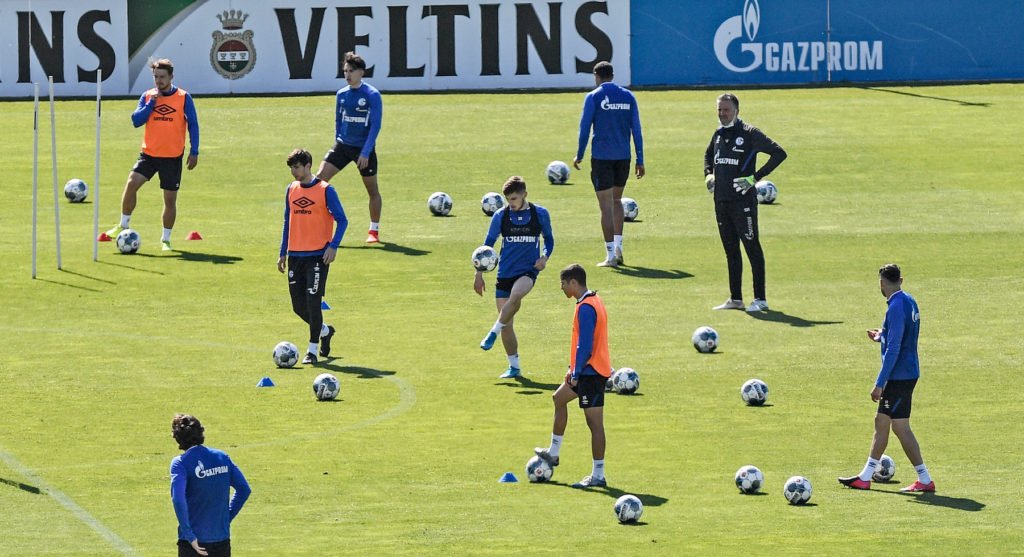Back to: PHYSICAL HEALTH EDUCATION JSS1
Welcome to class!
In today’s class, we will be talking about ball games – soccer. Enjoy the class!
Ball Games – Soccer

Football or soccer is a team sport played with a spherical ball between two teams of 11 players. It is played by approximately 250 million players in over 200 countries and dependencies, making it the worlds most popular sport. The game is played on a rectangular field called a pitch with a goal at each end. The object of the game is to score by moving the ball beyond the goal line into the opposing goal.

Players are not allowed to touch the ball with hands or arms while it is in play, except for the goalkeepers within the penalty area. Other players mainly use their feet to strike or pass the ball, but may also use any other part of their body except the hands and the arms. The team that scores most goals by the end of the match wins. If the score is level at the end of the game, either a draw is declared or the game goes into extra time or a penalty shout out depending on the format of the competition.
Laws of the game
1. The field of play:
The first rule looks at how the field is set up.
In the standard 11-a-side match, the pitch must be 90 to 120 meters in length and 45 to 90 meters wide, with the touchlines being longer than the goal lines.
The field of play is made up of white lines all around the pitch and is then split in two by the halfway line down the middle which runs parallel to the goal lines. The centre circle (where the game kicks off) is located at the midpoint of this line.
2. The ball:
A regulation soccer ball should be spherical and must weigh between 410 and 450 grams. In addition to this, the ball should be inflated to between 0.6 and 1.1 standard atmospheres. While this sounds very scientific, in reality, all soccer balls will weigh around that weight once they’ve been inflated to a reasonable pressure. Adult and adolescent soccer use size 5 balls, U12’s use size 4 balls, and U4’s (toddlers) use a size 3 soccer ball.
3. The number of players:
According to the official soccer rules, standard soccer has two teams playing against each other both with 10 outfield players and a goalkeeper on the field. This means teams should each start with 11 players. Although you can play with almost any number of players while kicking about with friends. The amount of substitutions varies depending on the competition.
But in general, each team is only allowed to make three substitutions per match.
4. The player’s equipment:
Players can’t wear anything that may cause an injury to themselves or any of the other players. For example, watches or jewellery are not permitted.
As for their basic equipment:
Soccer players need their team’s shirt, shorts, and socks. They also have to wear shin pads (which must be covered by the socks) and soccer boots which have the appropriate studs on them.
Goalkeepers must wear a team jersey that is a different colour from their teammates and they should also wear goalkeeper gloves throughout the match.
5. The referee:
To keep things fair, there is a referee who officiates the soccer match. And it’s up to them to keep the game flowing and keep the players under control. Wearing a different colour jersey from both of the teams playing, the referee is assisted by their two assistant referees who patrol the touchlines. Before the match begins, the referee needs to check the ball and see that all players are wearing the correct equipment.
6. The assistant referees:
Running up and down either touchline are the two assistant referees. It’s their job to flag when the ball has gone out of play and which side should be awarded the goal kick, corner, or throw-in. They also let the referee know when a player has been caught offside or when a foul has happened near to where they are.
7. The duration of the match:
A typical game of soccer lasts for 90 minutes. The game is divided into two halves of 45 minutes each. Between these two halves is a 15-minute half-time interval where play is stopped and the two teams have a break before play is resumed.
At the end of each half of the match, the referee may add on extra time if appropriate.
Extra time can be awarded for any substitutions that have taken place during the game, any injuries that occurred, how long it took for injured players to leave the field of play, and in some cases, when time-wasting has gone on.
In our next class, we will be talking about Practical (Practice and Performance of Volleyball). We hope you enjoyed the class.
Should you have any further question, feel free to ask in the comment section below and trust us to respond as soon as possible.

Good reading, nice learning.